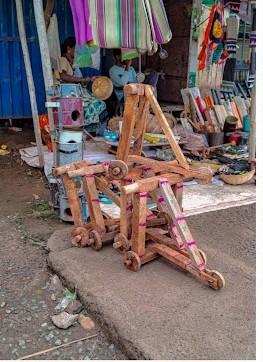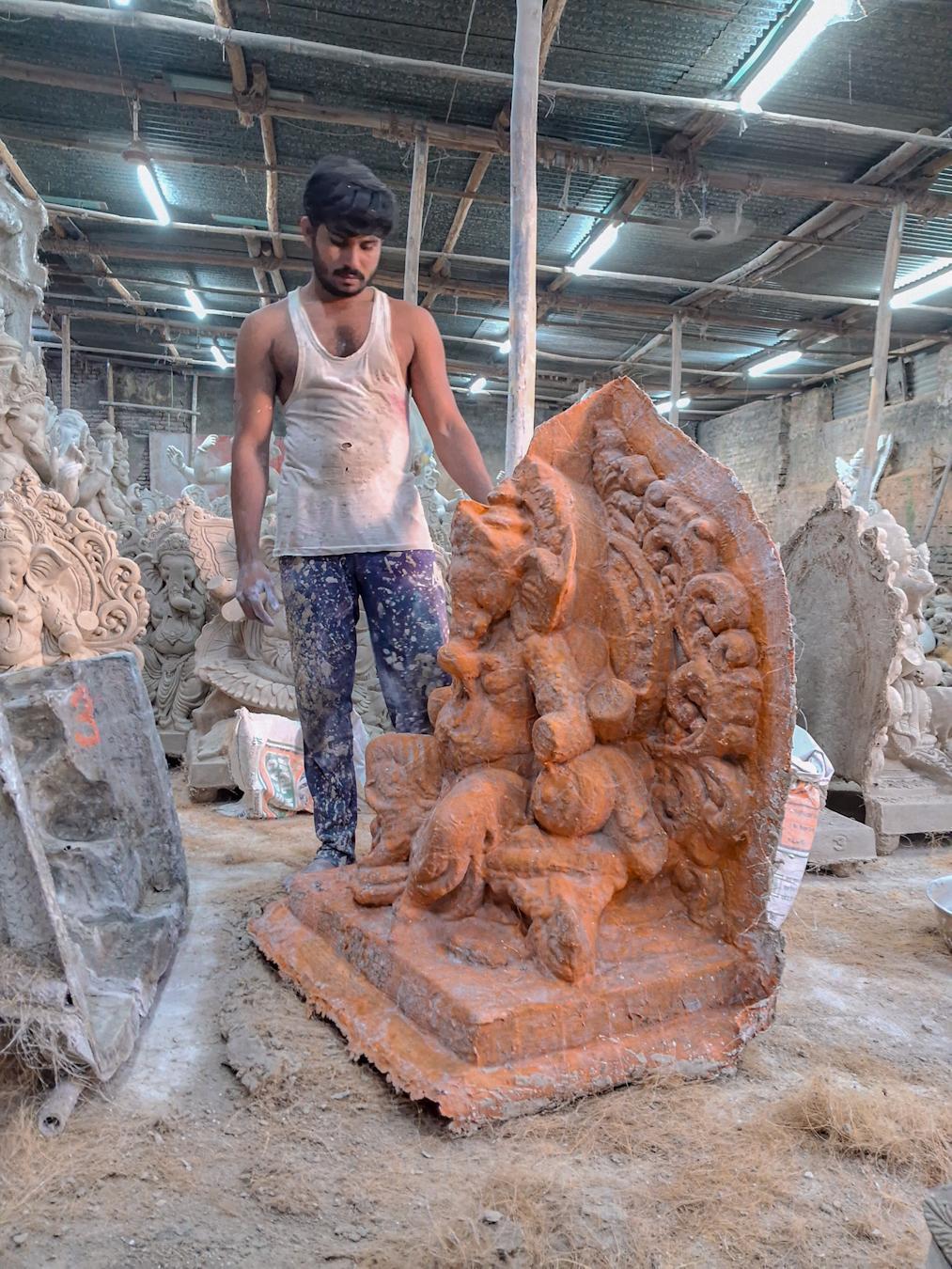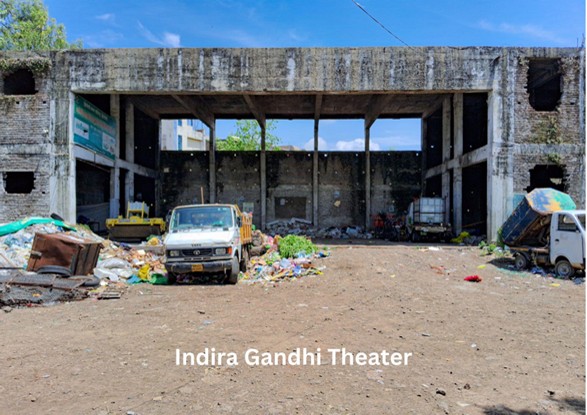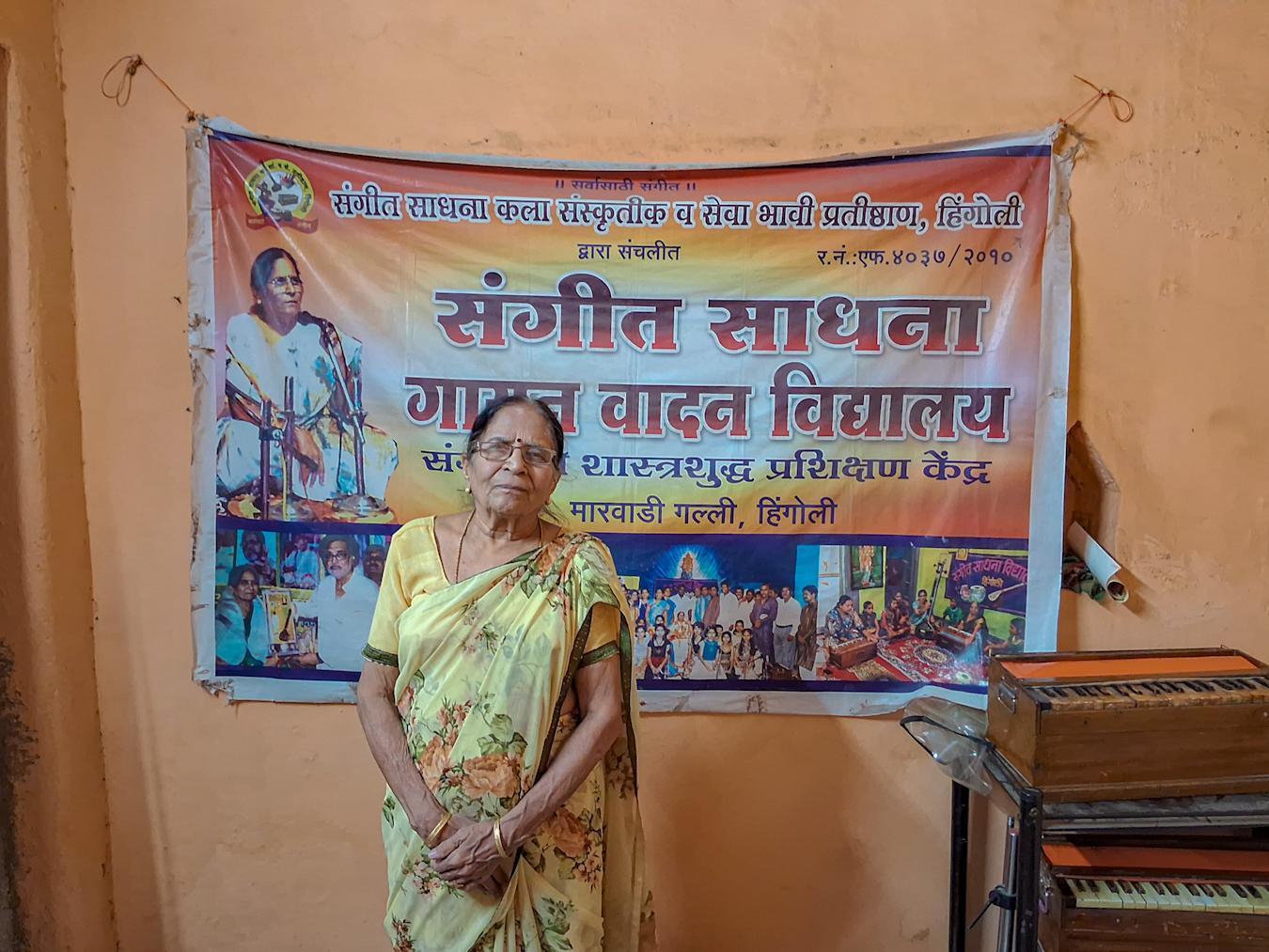HINGOLI
Artforms
Last updated on 21 July 2025. Help us improve the information on this page by clicking on suggest edits or writing to us.
Bahurupi and Raindar
Bahurupi is a traditional performance art in Hingoli in which artists portray characters from epic tales and history through costume, makeup, and storytelling. These performers travel between villages, using music and humor to engage audiences. In recent years, support for Bahurupi performances has declined, leading to the emergence of a related performance style known as Raindar.
Raindar performers typically wear discarded police uniforms and create interactive performances, often involving humor or surprise to draw attention in public spaces. These artists rely on small voluntary donations and continue the tradition as a livelihood practice. While the style has changed, the performances remain part of Hingoli's cultural landscape.
Craft Practices in Hingoli District
Bamboo and Leaf Work
The Burud community of Hingoli has traditionally produced functional household items using bamboo and coconut leaves, materials readily available in the local environment. Their work includes baskets, tools, wooden utensils, and children’s toys, which served everyday domestic and agricultural needs. These items were widely used before the availability of industrial goods and continue to be made, with some adaptation, for local use and sale.


Clay Craft
In Hingoli, the Kumbhar community has a long-standing tradition of producing clay items. Among these, the crafting of Ganesh murtis is a notable activity, especially in the period leading up to festivals. Artisans use a mixture of coconut waste and plaster of Paris to create a slurry, which is poured into molds. After the material sets over a period of 24 hours, the parts are assembled, dried, and then painted.


Domestic Crafts
In Hingoli, certain craft practices have long been part of everyday life, carried out within households using materials available in the local environment. These activities were not formally organized but were learned and passed on through routine use and necessity. While many of these practices have become less common, they reflect an earlier way of living that made use of what was at hand.
Use of Natural Materials
One example is the use of tag (Marathi: ताग), an aquatic shrub that grows near rivers and in muddy areas. Its stems, known for being both strong and flexible, were woven into sheets that served as walls for houses, animal shelters, and fish traps. The work was typically done at home and adapted to the needs of the household. However with the arrival of metal sheets and other manufactured materials, locals say that the use of tāg has declined, and the technique is now rarely seen.
Leaf Utensils for Ceremonial Use
For ceremonial food offerings, particularly during annadān (Marathi: अन्नदान), people made plates and cups from the leaves of Palash and Temburni. These leaves were woven or stitched into disposable utensils, which were used to serve food during religious and community gatherings. This method of creating utensils was once widespread, but today, plastic alternatives are more commonly used.
Rope Making and Household Weaving
Weaving remains part of household activity in some villages. Many women engage in weaving small items as part of domestic routines. In addition, retired farmers often make ropes for agricultural work, using recycled polypropylene bags as raw material. The process of rope making continues in areas where such tools are still in use for farming and other tasks.
Creative Spaces of the District
Rajiv Satav Natyagruha
The Rajiv Satav Natyagruha, named after politician Rajiv Satav, is a theater located in Hingoli, established to host local cultural and artistic events. According to local residents, the theater is infrequently used, and public performances have become less common in recent years. Perhaps revitalization efforts may require community involvement and support through local institutions.

Indira Gandhi Theatre
The Indira Gandhi Theatre in Hingoli was once a key cultural venue before its closure over 30 years ago. It hosted a range of theatrical and cultural events and was named after the former Prime Minister of India. Though no longer operational, it is fondly remembered by residents for its contribution to the local scene.

Artists
Anuradha Nandedkar

Anuradha Tai Nandedkar is an Indian classical music ("Shastriya sangeet") practitioner in Hingoli. She performs vocally and plays instruments including the peti and veena. After moving to Hingoli in 1970, locals remark that she was one of the few practitioners of classical music in the area. Despite challenges, she continued to perform, participate in competitions, and eventually began teaching music, starting with a single student.
Her home-based school later became affiliated with Akhil Bhartiya Gandharva Mahavidyalaya, Mumbai, offering degrees such as Visharad (bachelor's) and M.A. (master’s) in classical music. Over the years, many of her students pursued music professionally. She received several awards, including the Kalpataru Award, recognizing her work in music education and preservation of classical traditions.

Gulabrao Ghuge
Gulabrao Ghuge, born in Hingoli city, has been involved in cultural activities since childhood. He actively participated in school events and later completed a Bachelor of Science in Dairy Science. During his college years, he took part in youth festivals, representing Hingoli District.
Following college, he continued to engage in cultural work and participated in the Rajya Natya Spardha (state-level theater competitions), where he received an award from former Cultural Minister Pramod Navalkar. His artistic activities later included set design for theater productions and the development of skills in lighting design. He remains active in various cultural events in the region.
Last updated on 21 July 2025. Help us improve the information on this page by clicking on suggest edits or writing to us.